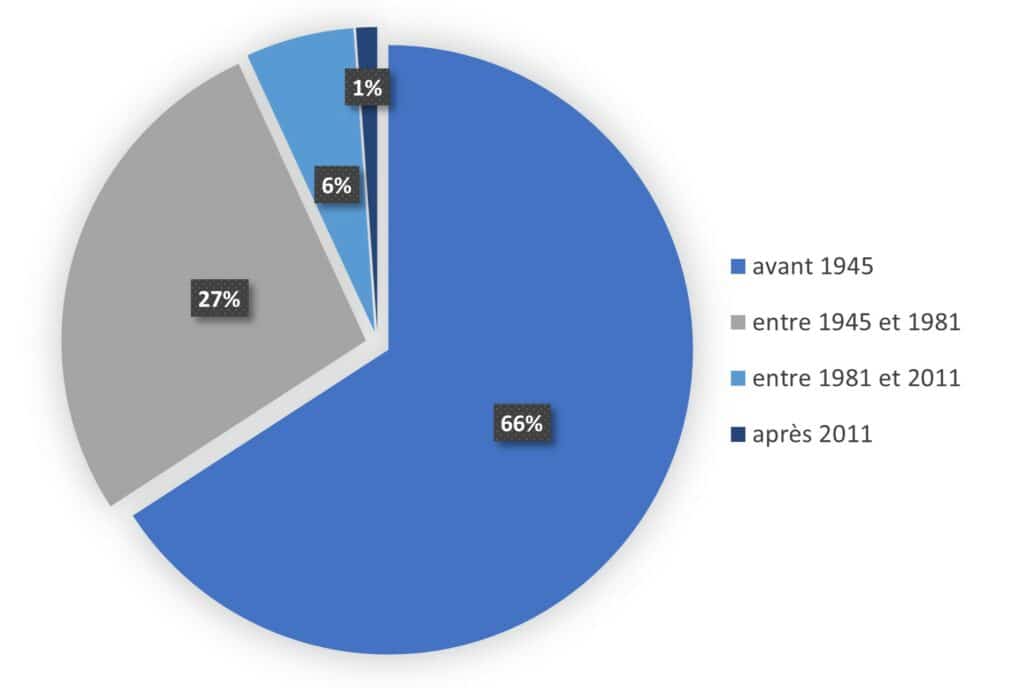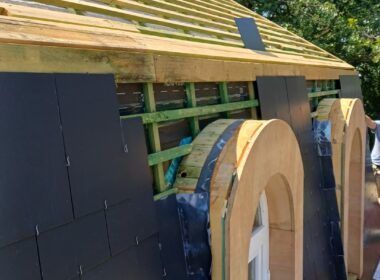The programme “Investigation à La Une – PEB: la Performance Embarrassante des Bâtiments” (Investigation – EPB: the Embarrassing Performance of Buildings) has caused a great deal of discussion since it was broadcast by RTBF on 8 February. All the testimonies in this report question the reliability of the EPB certificate in assessing the energy performance of buildings.
Why are we suddenly seeing so many people for whom the energy performance of a property was previously of no importance now being troubled by its unreliability? Since the indexing of rents is no longer allowed for category F and G properties and is limited to 50% for category E, the National Union of Owners and Co-owners has launched a real crusade against the EPB certificate, even going so far as to consider filing an appeal before the Constitutional Court to cancel the freeze on its indexing.
For many people who are not familiar with the subject, the EPB involves colour, as does the energy label of a household appliance or the nutritional score of a food product. For them, the notions of primary energy and consumption in kWh/m² year are totally abstract and detached from reality. The disparity of the results obtained for identical properties in different geographical locations, during different periods or according to different EPB certifiers, does not help owners trust the EPB certificate they are given.
It is true that in Brussels, as in the two other regions, construction professionals who have had to calculate the energy performance of buildings since 2008 are confronted with the weaknesses of the software on a daily basis. Whether they are EPB advisors, architects or, more recently, EPB certifiers, the most conscientious among them have had to find a modus operandi that allows them to realistically evaluate the energy performance of the buildings submitted to them.
How can it be explained that between three municipalities located on a postage stamp, Uccle, Rhode-Saint-Genèse and Waterloo, whose building typology and climate are not fundamentally different, the EPB procedures are governed by three different regulations, each appointing three different stakeholders? The EPB is considered successively by auditors, consultants, and certifiers, each of whom must be licensed in all three regions. Nine professionals for the same subject. This is difficult to understand in a European space where an architect who graduated in Belgium can practice in the three Regions and even in the rest of Europe.
The disparity between the regulations, the difference in the PEB index for an identical property and the different calculation methods in the three Regions have been a real headache for construction professionals since the EPB regulations were introduced.
The differences in results between the EPB software used for construction/renovation and that used for certification are also an aberration that is difficult to explain. And yet, these evaluation tools are essential for the professionals who design, evaluate or certify the energy performance of buildings.
The indiscriminate rejection of the EPB and the regulations that use it as an evaluation tool cannot be the correct attitude given the current cost of energy and the energy shortage that threatens our country. Brussels architects prefer to adopt a more constructive stance so that the calculation methods, the design of energy renovations and the evaluation of their cost allow the Brussels-Capital Region to reach the objectives set by Europe.
As a reminder, the Brussels-Capital Region is committed to the Renolution strategy that aims to meet the European directives to achieve carbon neutrality by 2050. By then, the 200,000 buildings and 600,000 homes in the Region must have reached an average primary energy consumption of 100 kWh/m² per year (C+ in Brussels). Once again, this value or label is an enigma for the average person and for many construction professionals. Non-residential buildings will have to move towards becoming energy-neutral for heating, domestic hot water, cooling and lighting. This is a slightly vaguer notion.
In Brussels new software should be made available to EPB professionals in 2026 to evaluate, first, the 300,000 dwellings still to be certified and, second, the improvements made to the Region’s entire building stock over the years. The software will have to be simple if it is to evaluate so many properties in a very short time. This means that it will only give a simplified and partial view of the actual performance of the certified properties. Much more elaborate calculation and simulation tools already exist but they cannot be used due to the number of dwellings to be analysed. We all hope that the new EPB tool will combine simplicity and realism and, above all, that it will be used by conscientious and competent professionals.
But beyond the software, which is and always will be an imperfect tool, shouldn’t we all make the effort to imagine the concrete results to be achieved and the means to get there? The ultimate goal is not to put a colour on a building or dwelling, but to reduce the primary energy consumption of the Brussels building stock as much as possible and enough to achieve carbon neutrality by 2050.
Let’s not forget that the Brussels context is particular in that our region is exclusively urban, unlike the other two. There are a number of consequences:
- old (66% before 1945) and therefore poorly insulated (46% in class F or G) buildings. The other regions also have urban areas, but they are offset by more recently urbanised and built-up extra-urban areas;
- only 39% of owners in Brussels occupy their property, contrary to the Belgian average of 66%. In Brussels, as in other Belgian cities, 60% of inhabitants are tenants and therefore have very limited means to improve the energy performance of their homes;
- as in all cities, 50% of homes are located in multi-unit buildings, which inevitably raises the question of how to manage the renovation work in a co-ownership property;
- the concentration of buildings with high heritage value is higher than in other regions with a mix of old urban areas and recent suburban areas;
- Brussels’ urban planning regulations and the procedure for granting permits are more complex than in the other regions, and the content of the new RRU, which will be submitted to a public inquiry at the beginning of 2023, does not augur well for positive developments in this area;
- the concentration of buildings limits to the extreme the possibility of producing materials and processing waste on Brussels soil, which confirms the obviousness of pushing the circular approach as far as possible.
On the basis of these few considerations, and there are many others that could be mentioned, the objective of carbon neutrality by 2050 will probably be more complicated to achieve in the Brussels-Capital Region than elsewhere.

Is blocking the legislative process the way to go? This is unlikely. In any case, architects, through the associations, in AriB and in UPA, have decided to take part in the work of the Renolution Alliance to bring the experience that our profession has acquired over the decades to the energy renovation of buildings.
Heating energy consumption is achieved through the insulation of the envelope, air tightness, compactness, etc. Architects can help to develop the necessary technical solutions. Who else would be more likely to propose a new architectural language so that our city is not coated with polystyrene? It also involves the implementation of increasingly efficient technical facilities, whose principles we know but whose operation we must learn to control better.
Primary energy consumption takes into account overheating in addition to the consumption of technical installations. Here again, it is up to us to find architectural solutions that combine aesthetics and technology to meet these needs.
The EPB tool is just a complex console where each slider makes it possible to increase or decrease the energy performance of each element that makes up a building to reach a theoretical result. We, as architects, will have to be able to materialise this mass of abstract numbers to evaluate the technical consequences and the cost. This is why our participation in the Renolution Alliance is so important.
Beyond these considerations, in terms of the 600,000 dwellings in question, the best EPB tool, the most opportune architectural design and the most careful implementation will undoubtedly result in a dizzying expenditure of energy, materials, capital and waste. Few people are currently prepared for such an undertaking. Without a real change of mentality, even the most stringent legislative constraints will not be enough to achieve energy neutrality by 2050. We will have to find ways to convince the 60% of landlords that the energy renovation of their property is a vital requirement for the Region and even, let’s dare to dream, make them want to be involved in this ambitious project.
Let’s go one step further. By adapting our way of life and way of living (many are already doing this due to energy costs), we could limit the implementation of expensive works and installations through restraint inspired, for example, by the “SlowHeat” trend. The average surface area per inhabitant in Belgium is 35 m² or more or less 100 m³, while the body of even the most corpulent among us does not exceed 0.1 m³. Given this 1:1000 ratio, is it really reasonable to focus on insulating the housing envelope? Primary energy consumption and heating energy consumption depend on the ambient temperature inside the dwellings. A subtle balance between the insulation of our body, the development of targeted spaces offering us real thermal comfort and the overall insulation of the housing envelope could reduce the resources that need to be used to achieve neutrality. Obviously, it will also be necessary to find the right lease agreement so as not to exonerate non-occupying landlords from their responsibility and put the entire burden of the effort on tenants, who are sometimes already in a precarious situation.
There is no shortage of challenges. The Renolution strategy will need all construction and property professionals to find the means to achieve the Region’s ambitions.
Author: Erwin Spitzer: Architect and EPB Advisor, Active participant in the Renolution Alliance, AriB Director and UPA-BUA Vice President
Read also: Glass: essential in any construction project; Moment-resisting joints in timber construction; Infrastructures “in between” and the role of placemaking in the circular transition; What future for sustainable construction?





